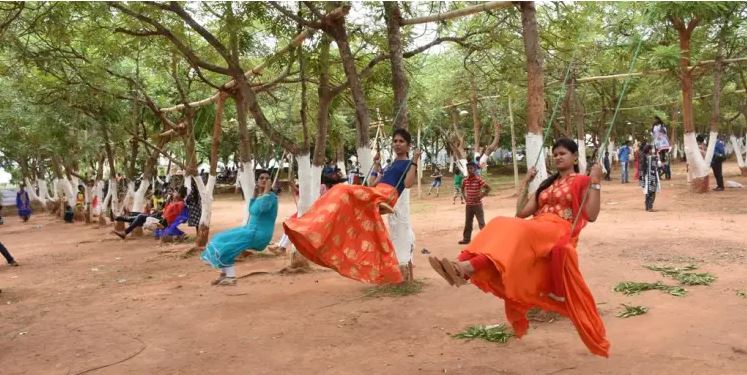Today marks the beginning of the vibrant and much-anticipated Raja Festival in Odisha, a three-day event that celebrates femininity, fertility, and the arrival of the monsoon. The festival, deeply rooted in Odia culture and traditions, commenced with great enthusiasm and fervor across the state, bringing together communities in joyous celebration.Raja Parba, often referred to simply as “Raja,” is unique to Odisha and symbolizes the menstrual cycle of the Earth, which is personified as Mother Earth. The festival spans three days, each with its own significance and rituals. The first day, known as Pahili Raja, is dedicated to the preparation and onset of the festivities. It is followed by Mithuna Sankranti, the second day which marks the beginning of the solar month of Mithuna, and the final day, Bhuin Dahana or Sesha Raja, which symbolizes the culmination of the festivities.The celebrations began early in the morning with traditional rituals and prayers. Women, dressed in new and vibrant sarees, gathered in temples and community spaces to offer prayers for prosperity and well-being. One of the highlights of Pahili Raja is the tradition of swinging, known as ‘Raja Doli.’ Swings are decorated with flowers and colorful fabrics, and women and girls take turns swinging high into the air, symbolizing freedom and joy.In the capital city of Bhubaneswar, the streets were adorned with festive decorations, and the air was filled with the aroma of traditional Odia delicacies. Poda Pitha, a special sweet cake made of rice flour, jaggery, and coconut, is a must-have during Raja. Families prepared various other dishes like Chakuli Pitha, Manda Pitha, and Enduri Pitha, showcasing the rich culinary heritage of the region.Markets and bazaars bustled with activity as people thronged to buy new clothes, accessories, and other festive items. Traditional music and dance performances were organized in various parts of the city, adding to the festive spirit. Folk songs specific to Raja, known as Raja Geeta, echoed through the streets, celebrating the essence of womanhood and nature.In rural areas, the festival took on a more communal flavor with entire villages coming together to celebrate. Women participated in traditional games, sang folk songs, and enjoyed the seasonal fruits that are integral to the festival, such as mangoes, jackfruit, and litchis. The agricultural communities also took this time to rest and rejuvenate, as Raja marks the beginning of the agricultural season with the first monsoon rains.The Raja Festival is not just a celebration of nature’s cycles but also an assertion of the cultural identity of Odisha. It reinforces the bond between people and the earth, highlighting the importance of respecting and nurturing nature. The festival also emphasizes gender equality and the respect for women, as they are at the center of the celebrations.As the sun set on the first day of Raja, the spirit of festivity continued to soar. People gathered for evening cultural programs, where local artists performed traditional dances like Odissi and Gotipua, enchanting the audience with their grace and storytelling.The first day of Raja Parba has set a joyous and spirited tone for the remaining days of the festival. As the celebrations continue, the people of Odisha look forward to the monsoon rains, symbolizing renewal and fertility, and the continuation of their rich cultural heritage.
Odisha Celebrates the First Day of Raja Festival with Grandeur and Tradition

